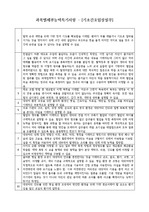* 본 문서는 배포용으로 복사 및 편집이 불가합니다.
서지정보
ㆍ발행기관 : 한국영재학회
ㆍ수록지정보 : 영재교육연구 / 8권 / 2호
ㆍ저자명 : 김홍원
ㆍ저자명 : 김홍원
목차
Ⅰ. 서론Ⅱ. 연구의 필요성 및 목적
Ⅲ. 수학 영재성과 수학 창의적 문제 해결력
Ⅳ. 수학 창의적 문제해결력 검사 도구의 제작과 표준화 과정
Ⅴ. 결과 분석 및 해석
Ⅵ. 규준의 작성
Ⅶ. 결론
참고문헌
ABSTRACT
한국어 초록
The purpose of this study is to develop a test which can be used in identification of the gifted students in the area of mathematics. This study was carried out for two years from 1996.Mathematical giftedness is, in this study, regarded as a result of interaction of mathematical thinking ability, mathematical creativity, mathematical task committment, background knowledge. This study presumed that mathematical thinking ability is composed of seven thinking abilities: intuitive insights, ability for information organization, ability for visualization, ability for mathematical abstraction, inferential thinking ability(both inductive and deductive thinking abilities), generalization and application ability, and reflective thinking. This study also presupposed that mathematical creativity is composed of 3 characteristics: fluency, flexibility, originality.
The test for mathematical creative problem solving ability was developed for primary, middle, and high school students. The test is composed of two parts: the first part is concentrated more on divergent thinking, while the second part is more on convergent thinking. The major targets of the test were the students whose achievement level in mathematics belong to top 15~20% in each school.
The goodness of the test was examined in the aspects of reliability, validity, difficulty, and discrimination power. Cronbach was in the range of .60~.75, suggesting that the test is fairly reliable.
The validity of the test was examined through the correlation among the test results for mathematical creative problem solving ability, I. Q., and academic achievement scores in mathematics and through the correlation between the scores in the first part and the scores in the second part of the test for mathematical creative problem solving ability.
The test was found to be very difficult for the subjects. However, the discrimination power of the test was at the acceptable level.


















